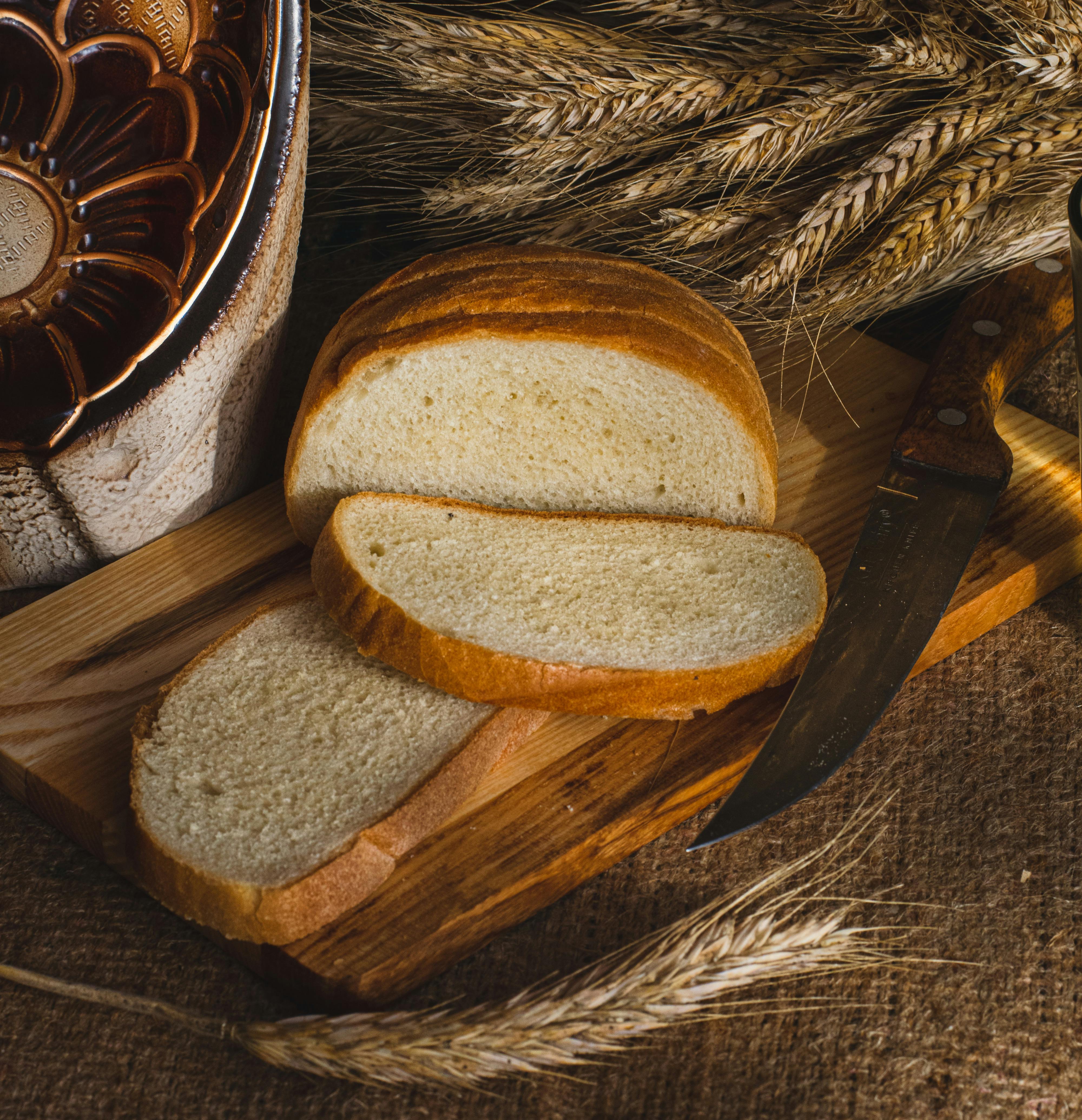Apply Now
Top 5 Effective Keto Baking Strategies for 2025
Introduction
Keto baking has surged in popularity as more individuals embark on their ketogenic journeys, seeking delicious yet low-carb alternatives to traditional baked goods. By utilizing keto-friendly ingredients, it's possible to create scrumptious treats that satisfy sweet cravings without compromising dietary goals. Whether you're a seasoned keto enthusiast or a newcomer, mastering effective keto baking strategies is essential for crafting delectable desserts like keto chocolate cake, gluten-free cookies, and rich keto cheesecake. In this article, we will explore five effective strategies to enhance your keto baking game for 2025, ensuring you enjoy guilt-free treats without sacrificing flavor or texture.
The benefits of incorporating keto baking into your meal planning are manifold. From providing a range of quick and easy keto desserts to promoting low-carb nutrition, these strategies will help you thrive on a ketogenic diet. Before we dive into the specifics, we’ll introduce key takeaways that you can implement right away:
1. Master the use of alternative flours.
2. Understand sugar substitutes thoroughly.
3. Embrace high-fat ingredients for texture.
4. Explore creative variations of classic recipes.
5. Optimize baking techniques for perfect results.
Understanding these strategies will empower you to bake keto desserts that are both satisfying and nutritious.
Mastering Alternative Flours for Low Carb Baking
Building on the fundamentals of keto baking, the choice of flour is critical. Traditional wheat flour contains too many carbs for a ketogenic diet, but luckily, there are several keto-friendly alternatives worth exploring.
Best Keto-Friendly Flour Options
Almond flour and coconut flour are among the best keto flours available. Almond flour offers a nutty flavor and moist texture, while coconut flour gives a lighter consistency and a hint of sweetness. These flours not only lower the carb count but also provide healthy fats that are essential for the ketogenic lifestyle.
When using these flours, it's important to adjust your recipes accordingly. For instance, almond flour recipes typically require more eggs to help bind the ingredients, whereas coconut flour recipes often necessitate additional liquid due to its highly absorbent nature.
Practical Tips for Flour Substitution
When converting traditional recipes, start with a 1-to-1 ratio for almond flour, replacing wheat flour directly. Coconut flour, on the other hand, generally requires a ratio of 1:4 due to its absorbent properties. Experimenting with these substitutions will fine-tune your baking, leading to tastier and lower-carb results.
Understanding the balance between moisture and structure is key, and perusing a keto cookbook can offer valuable insights into successful flour mixtures. Additionally, consider mixing different low-carb flours for diversified textures, like combining almond and coconut flour in your keto pancake mix.
Common Mistakes to Avoid
One common pitfall is the overuse of coconut flour, which can make recipes overly dry. Always monitor your batter's consistency to ensure optimal baking outcomes. It’s also imperative to check for any potential allergens in the flours you choose, as some readers may have sensitivities to almonds or coconuts.
This naturally leads us to the next strategy: mastering sugar replacements.
Understanding Sugar Replacements for No Sugar Baking
As you refine your keto baking techniques, substituting sugar becomes an integral skill. While sugar offers sweetness, it’s crucial to find alternatives that align with keto dietary guidelines.
Top Sugar Alternatives for Keto Desserts
Several low-carb sweeteners can be employed in your keto baking. Erythritol, stevia, and monk fruit are popular choices. They have minimal to zero calories and will not disrupt your ketosis efforts. Erythritol, in particular, is often favored for its sugar-like taste and excellent performance in baked goods.
Each sweetener has its unique flavor profile and sweetness level, so take time to experiment with combinations to achieve your desired taste. It’s also worthwhile to check the glycemic index of various sweeteners to understand their impact on blood sugar.
Practical Applications in Keto Recipes
When baking, it’s essential to monitor the conversions when switching traditional sugars for keto-friendly alternatives. For example, 1 cup of sugar typically equals about 3/4 cup of erythritol. However, you may need to taste test since different sweeteners can have varying levels of sweetness.
Incorporating sugar-free frosting and utilizing sweeteners in your keto bread or muffins can greatly enhance their flavor while keeping them low in carbs.
How to Avoid Over-Sweetening
The taste of keto desserts can be nuanced, and over-sweetening is a common mistake. Always start with small amounts of sweeteners and gradually increase until satisfied. Familiarizing yourself with flavor profiles will enhance your baking expertise, leading to rewarding outcomes.
With these details in mind, let's delve deeper into achieving perfect textures through the right ingredients.
Embracing High-Fat Ingredients for Quality Keto Baking
Understanding the role of fats in keto baking adds depth to your creations. High-fat ingredients contribute to rich flavors and satisfying textures that are often missed in low-carb diets.
Essential High-Fat Ingredients for Keto Desserts
Ingredients like cream cheese, heavy cream, and butter not only provide delightful flavors but serve as excellent binding agents in keto recipes. Incorporating these elements can elevate the taste of keto chocolate chip cookies or any no-sugar desserts.
Moreover, adding fats like coconut oil can enhance the moistness of baked goods while remaining within the keto-friendly parameters. For a more gourmet element, consider using ghee, a clarified butter that is lactose-free and highly nutritious.
Practical Tips for Incorporating Fats
Experimenting with fat ratios can change the texture and flavor of your dishes. In recipes for keto cheesecake or brownies, ensuring the right balance is crucial—too little fat can lead to dryness, while too much can cause a greasy mouthfeel.
Additionally, playing with flavors by incorporating nut butters into your keto baking can achieve delightful results in recipes for keto fudge or almond flour cookies.
Common Pitfalls
One main mistake in baking is not measuring fat content accurately. Overestimating can lead to a heavily oily end product, while underestimating can cause dryness. To ensure success, adhere closely to the recommended measurements in your recipes.
Taking these lessons into account leads us to explore creative variations in recipes.
Creative Variations to Classic Recipes
With the foundations for keto baking established, it's time to unleash your creativity by reimagining classic treats into keto-friendly versions that everyone can enjoy.
Transforming Traditional Recipes into Keto Versions
Classic desserts such as pies, cakes, and cookies can be easily modified to fit a ketogenic diet. For keto pie recipes, switching to a keto pie crust using almond flour or coconut flour is a great place to start. Similarly, low carb cupcakes can be made with simple ingredient substitutions.
Another fantastic way to adapt classic treats is through keto variations of holiday recipes. From keto pumpkin bread to sugar-free cookies that replicate family favorites, these adaptations keep traditions alive while staying health-conscious.
Tips for Experimenting with Flavors and Textures
Try enhancing your flavors by incorporating spices like cinnamon in ketogenic brownies or vanilla in your keto cereal. Don’t hesitate to add unexpected ingredients, such as berries or nuts, to create unique flavors that pop.
Using creative garnishes like sugar-free whipped cream can add elegance to desserts without increasing carbs, transforming your keto snack recipes into beautifully presented dishes.
Avoiding Recipe Failures
When adapting recipes, ensure you balance texture and sweetness, understanding how these changes affect the final product. Keeping a notebook of your experiments and their results can aid in perfecting your keto desserts over time.
This brings us to the final strategy: optimizing baking techniques.
Optimizing Baking Techniques for Perfect Keto Results
Mastering baking techniques can be the difference between a successful keto dessert and a kitchen failure. Fine-tuning your methods complements all the knowledge you've gained about ingredients.
Baking Temperature and Time Management
Temperature plays a crucial role when baking low carb bread or cakes. Many low-carb recipes require lower temperatures and longer baking times compared to their traditional counterparts. Always use an oven thermometer to ensure accuracy, as even slight deviations can affect the final product.
H3>Cooling Strategies for Better Texture
Cooling your baked goods properly is essential. Allowing items to cool on a wire rack prevents sogginess while promoting desired crispness, particularly for keto cookies and bread. Additionally, properly storing baked treats can preserve their quality longer when following sugar-free baking guidelines.
Techniques to Enhance Flavor Development
To deepen flavors in your keto treats, consider methods such as browning butter before incorporating it in recipes. This adds complexity and enhances the taste, ensuring every bite of your keto chocolate cake or keto muffins are as rich and flavorful as possible.
With these refined baking techniques, you'll have the tools necessary for success in low-carb baking!
Conclusion and Q&A
In conclusion, mastering keto baking strategies essentially revolves around the thoughtful selection of ingredients and techniques. With alternative flours, sugar substitutes, high-fat ingredients, creative variations, and optimized baking methods, you can create delightful keto desserts that suit a variety of tastes.
While baking can pose challenges, engaging with these principles and strategies ensures you remain on track while satisfying your sweet tooth. Here are some frequently asked questions:
Q: What are the best flours for keto baking?
A: The most popular choices are almond flour and coconut flour due to their low carbohydrate content and versatility in a variety of recipes.
Q: Can I use traditional sugar in keto baking?
A: Traditional sugar is not suitable for keto baking; instead, opt for alternatives like erythritol or monk fruit sweetener, which have minimal carbs.
Q: What are some easy keto desserts to try?
A: Simple options include keto chocolate chip cookies, keto cheesecake, and no-sugar brownies that are ideal for beginners venturing into keto baking.
Q: How can I ensure my keto baked goods have the right texture?
A: Pay attention to moisture ratios by carefully measuring your ingredients and following proper baking techniques, which will guide you to more successful baking endeavors.
Q: Are there healthy snacks I can make with keto baking?
A: Absolutely! Popular keto snack recipes include keto granola bars, low carb biscuits, and keto snack bars that are nutritious and delicious.
These insights should empower your keto baking throughout 2025 and beyond.




